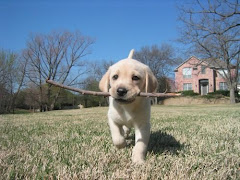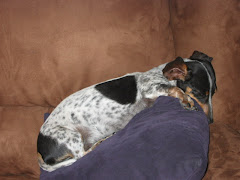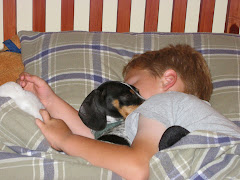If you have thought of getting your dog started on agility training, then you have probably come across a multitude of products. For the beginner, the various equipment can be daunting, especially without prior knowledge of how the equipment is used. To make things easier, here is a breakdown on a few pieces of agility equipment and how each is completed. Before you know it, you'll be heading to the pet store to pick out your favorite pieces.
Agility courses can range in types and number of obstacles depending on the competition (or the owner's backyard). In a typical agility course you can expect to see weave poles, jumps, tunnels and chutes, A-frames or dog walks, see-saws, and pause boxes. A-frames, see-saws, and dog walks are all considered contact obstacles. These pieces of equipment have painted contact zones where the dog must keep one or both feet in the zone during obstacle completion. The setup of the course is unknown to the owner before the competition; during the competition, the obstacles must be completed in a specific order. The owner directs the dog through the course using voice commands and hand signals. The owner is not allowed to touch the dog or the equipment at any time. The dog is graded on how quickly and effectively he completes the course.
Weave poles vary in length but are normally made up of 6 to 12 poles. Competition poles are colored, making it easier for both the participant and the judge to trace the obstacle. The poles are fixed into the ground or part of an adjustable set. The poles are spaced anywhere from 19" to 25" depending on the agility level of the dog. The dog must start the weave poles by entering on the right side of the first pole. After that, the dog continues to weave through all the poles without skipping a pole.
Jumps come in a variety of sizes and styles. A tire jump is a suspended tire in which your dog must jump through. Bar jumps are similar in appearance to hurdles. Bar jumps can be one single jump or a series of jumps. When completing a bar jump, the dog must successfully clear the jump without knocking off the bar. Panel jumps are similar to bar jumps, except the dog jumps over a panel that touches the ground; unlike a bar jump, there is no space between the top of the jump and the ground.
When competing in an agility competition, you pooch will be required to run through a tunnel. The tunnels stand on their own and are completely covered; your pooch cannot see you. Chutes are similar to tunnels except they do not stand on their own. Instead, one end of the chute is open, but the rest of the chute lies on the ground. It's up to your dog to enter the open end and make his way through the collapsed chute.
A-frames are ramps that your dog must run over. The steepness of the frame can be adjusted. The A-frame is required in most agility courses, and it tests your dog on his ability to ascend and descend an incline. The dog walk is completed like the A-frame; your pooch must be able to make it across the walk. Instead of having an A shape, the dog walk consists of an incline, a flat walkway, and a decline. The see-saw is similar to its child's counterpart. As the dog walks up one side, the other side drops. The see-saw can be adjusted to different heights.
A pause box or table is quite simple. It is a square table with four legs that can be adjusted to different heights. When a pause box is present in an agility course, the dog must jump onto the table and remain still for a certain period of time.
Understanding the different types of equipment is the first step in training your dog for an agility competition. The equipment used in a competition is completely dependent upon the host of the competition. If you are looking to build your own obstacle course, then you should check with desired competitions to find out what types of equipment they favor. With practice and training, your dog can learn the ins and outs of the obstacle courses.
This article was written by Brian Spilner a provided by pet-super-store.com a site featuring: [http://www.pet-super-store.com/pet-supplies/petsafe/]Petsafe training collars and [http://www.pet-super-store.com/pet-supplies/innotek/]Innotek dog training systems
Dachshunds In Film: The Lemon Drop Kid
12 years ago













1 comment:
Thanks for the explanation, it gets confusing with all the the different obstacles they have to go through. Do you know of any sites that sell competition-standard dog agility equipment? Any help would be great!
Post a Comment